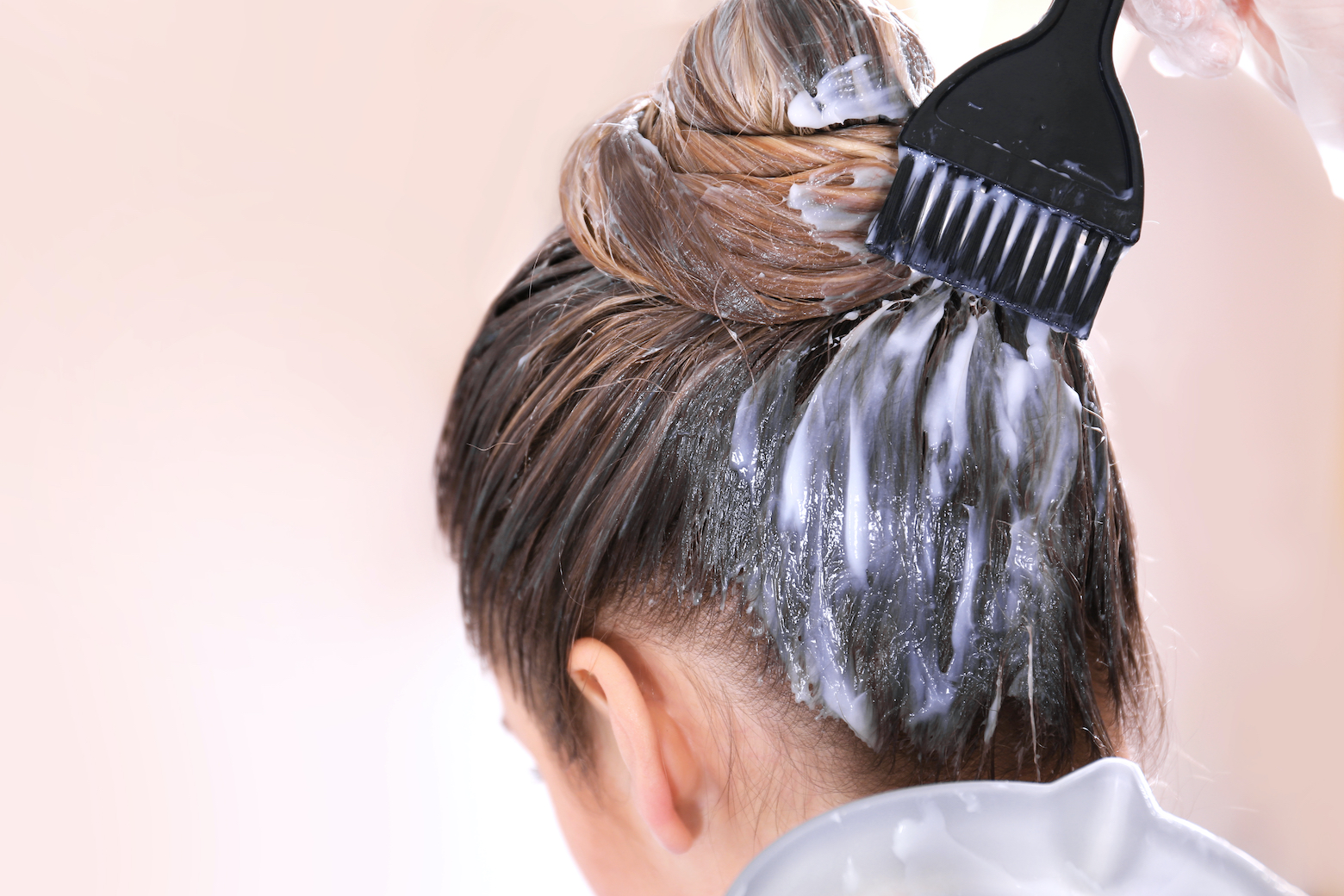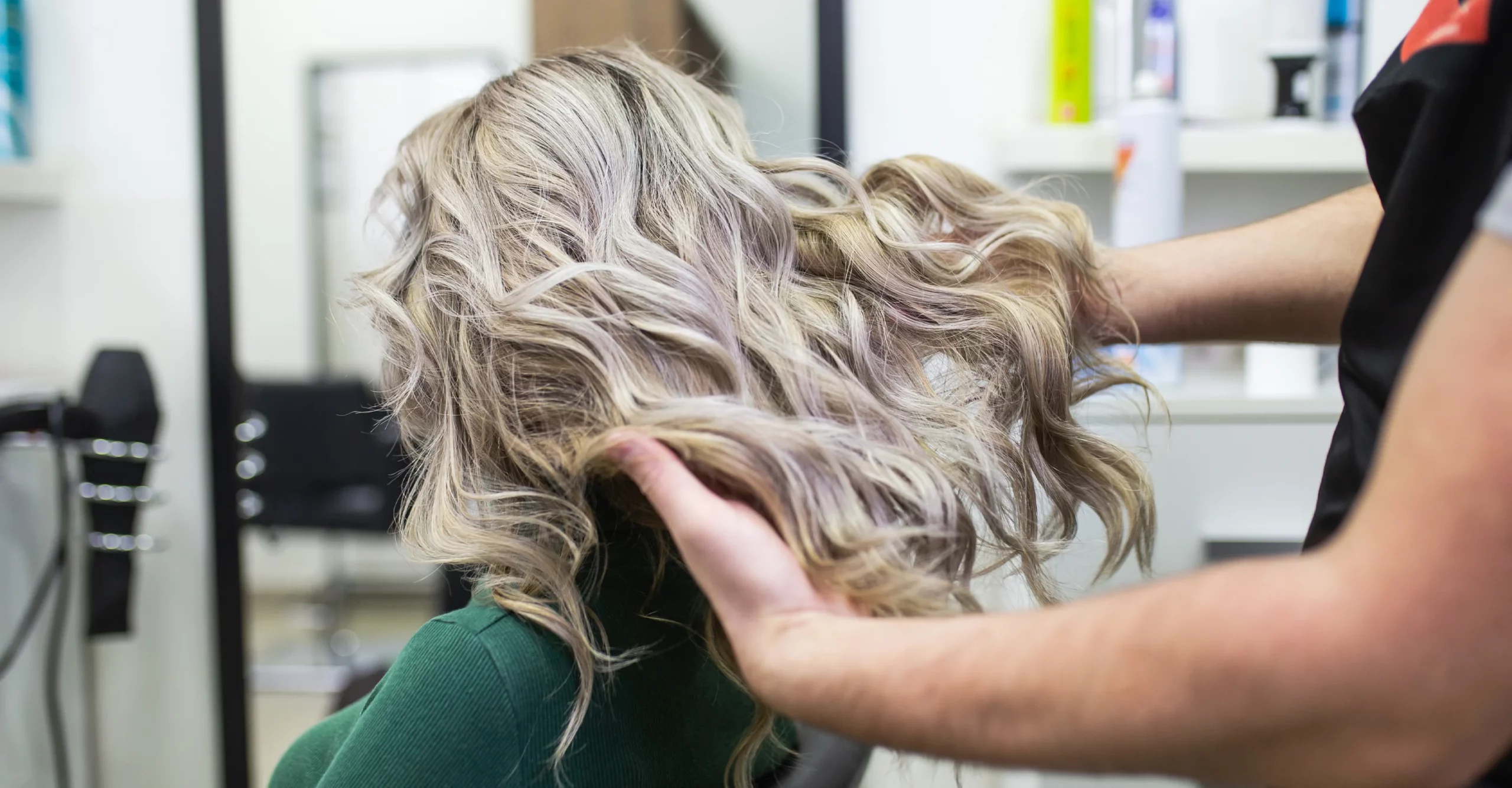What Color Should I Dye My Hair? Take Our Quiz
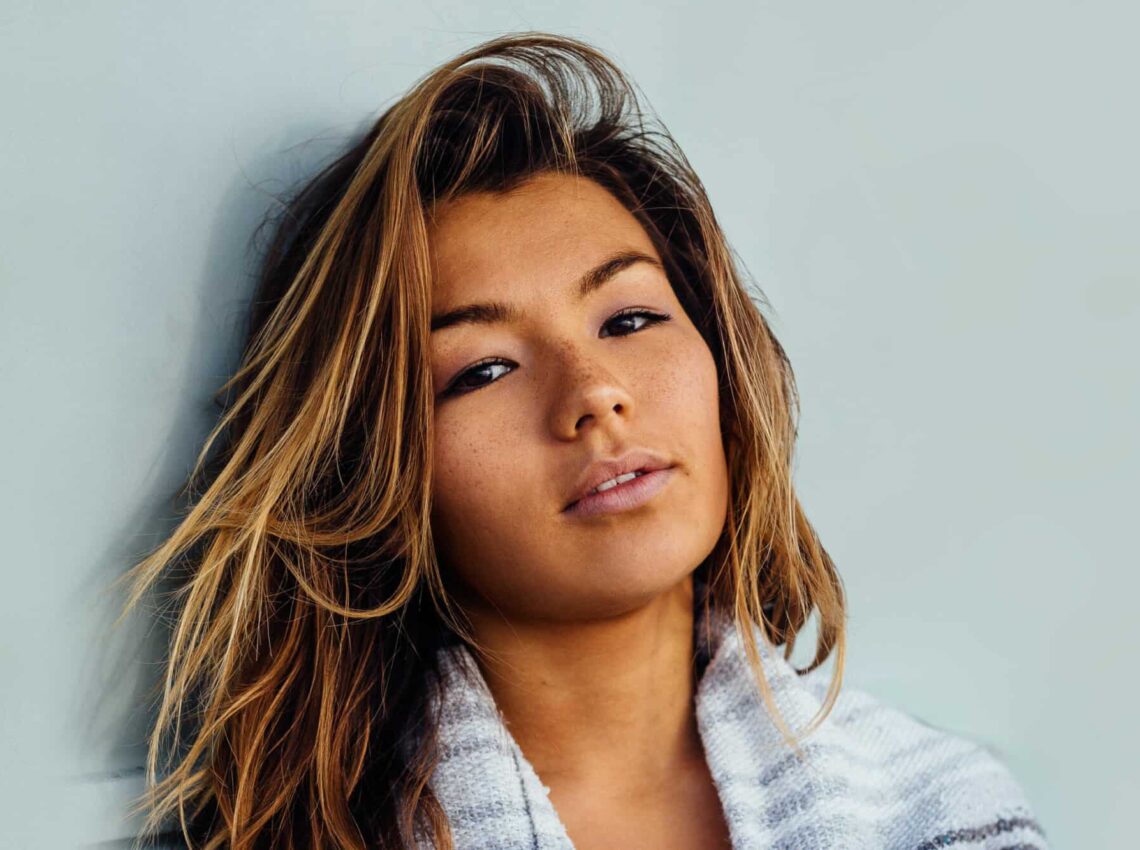
Let us guess — you asked yourself, “What color should I dye my hair?” and were hoping that Google would bring you the answer? However, your ideal hair color isn’t that easy to find. You have to consider a lot of factors, like how much maintenance you’re willing to put up with and how long you want your hair color to last.
You also have to consider what colors flatter you the most. Features like your skin undertones and your natural hair color affect this decision. But let’s get one thing straight — having a certain hair color, texture, or skin tone shouldn’t limit your new hair color. However, these factors can help you find dyes and shades that work best with your hair.
The nuances of finding the right hair color can be confusing. That’s why we put together this quick quiz to help you find your ideal hair color. We also included a guide and some hair color inspiration so you can understand everything you need to know about dyeing your hair.
[show_ss_haircolorquiz]
Any information you submit through StyleSeat’s “What Color Should I Dye My Hair?” quiz is subject to StyleSeat’s Privacy Policy available here.
What should I know before I decide on a hair color?
Whether you’re booking an appointment with a hair colorist or you’re planning to color your hair at home, you should take all of the same factors into consideration. Figure out these details about yourself before you even think about picking a new hair color.
Hair texture
Your hair texture can determine how well your hair can take in color. In this case, we’re speaking beyond your curl pattern. Your hair’s porosity and thickness can also determine how well your hair can take in color. Thicker hair generally takes longer to dye. Porosity, on the other hand, refers to how well your hair absorbs and retains moisture.
For example, high porosity hair can quickly absorb moisture but isn’t great at retaining it. This means hair color can fade quickly and end up looking uneven if it’s not properly applied.
That’s where it pays off to see a hair colorist or to at least go in for a consultation. They can take a look at your hair and walk you through the steps to get to your desired color.
Hair health
In addition to your hair type, the level of damage, past hair coloring, and past chemical processing also impact your potential colors. Damaged hair is more at risk to get damaged after coloring, especially if you aren’t great with maintenance.
Previous processing and coloring can also impact your hair’s ability to take in color. And yes, that box dye job you did in college counts. Be prepared to share your hair history with your colorist so they can make the best recommendation for you.
If you’re concerned about your hair health, you can ask for a strand test to double-check your hair’s strength. Strand tests can also help you see what the final result will look like, if you’re allergic to the dye, and if you need to make any adjustments.

Current and natural hair color
Your current hair color dictates what shades are achievable for your next hair color. If you’re starting with jet black hair, you won’t get to platinum blonde hair in one sitting. You’ll need to gradually work your way to that hair color to get it right without damaging your hair in the process.
Your childhood hair color can also help you decide what colors look natural on you. Your hair color as a kid is normally the richest since it still has lots of collagen and other proteins. If you’re most interested in dyeing your hair a natural color, dig up some old photos to get some childhood inspiration.
Skin tone
Your skin tone and undertone can help you decide what shade to choose. We’ll cover in the next section how both skin tone and undertones dictate your most complementary colors.
There are many skin tones out there with many ways to categorize them. For this guide, we’ll focus on these general categories: light, medium, and deep.
- Light skin is pale and is most prone to sunburns.
- Medium skin tends to have an olive tone and more easily tans.
- Deep skin has a darker tone and is least prone (but not invincible) to burns.
Skin undertones
The three main skin undertones are warm, cool, and neutral. You can try to figure out your undertones by looking at the color of your veins or by seeing how your skin looks when you’re wearing a white shirt.
Here are some characteristics to watch out for when you’re trying to find your undertone:
- You have a warm undertone if you have green veins and your skin looks a little yellow with a pure white shirt.
- You have cool undertones if you have bluish or purplish veins and your skin looks rosier with a pure white shirt.
- You have neutral undertones if you have veins that are a mix of all of those colors and if your skin doesn’t seem to change with a pure white or off-white shirt.
Generally speaking, warm undertones look great with warm hair colors and cool undertones look great with cool hair colors. However, you want a hair color that complements both your undertone and skin tone.
For example, if you have dark skin and a warm undertone, warmer hair colors can complement the natural reds and yellows in your skin. However, people with light skin and cool undertones also look great with warm hair colors.
Eye color
Eye color is another factor to consider if you’re having trouble deciding between shades. The right hair color can make your eyes pop or make them appear harsh. For example, blue eyes look great with ash or platinum blonde hair, but can look muted when paired with strong golden blonde hair.
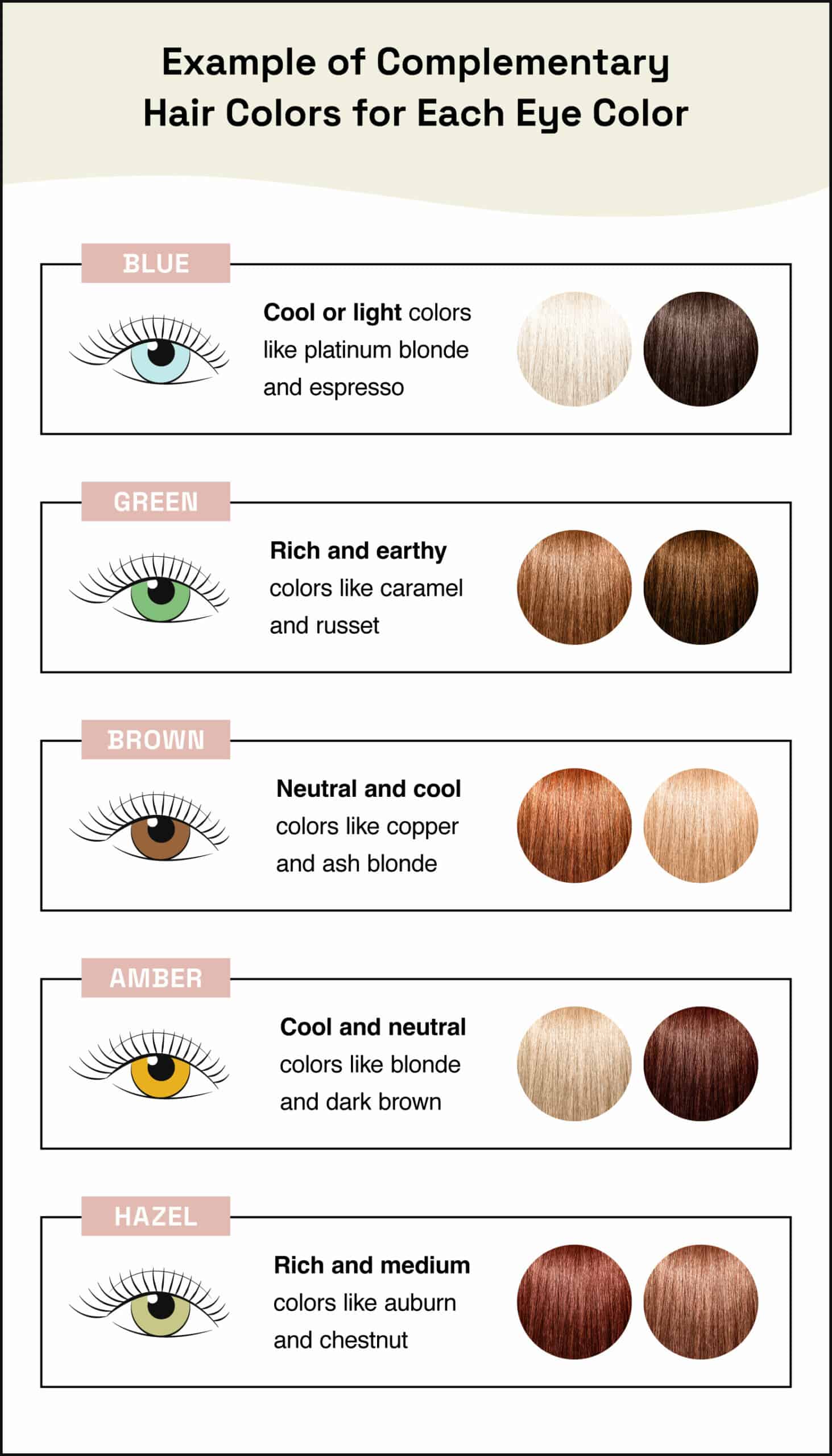
Commitment level
Lastly, you need to be honest with yourself on how much time, effort, and money you’re willing to invest in your hair color.
Going from a medium brown to a dark red isn’t as dramatic or as time-consuming as going from a dark brown to a peachy blonde. Dramatic changes will take time to accomplish and upkeep to maintain your color for a long time. Upkeep also involves touch-up appointments.
This doesn’t mean you can’t go for a lighter color if you’re strapped for time. Instead, you can work with a hair colorist to find a style and color that works with your budget and your commitment level.
Ombrés are a great option since the color is mostly applied toward the bottom of your hair. Since you don’t need to worry about your roots, you don’t need to go to the salon as often for touch-ups.
You also need to decide how long you want to stick with the hair color. There are three types of dyes you can choose from:
- Semi-permanent lasts between four and 12 washes
- Demi-permanent lasts up to 24 washes
- Permanent doesn’t wash out, but you’ll need to touch up your roots when your hair grows
These factors aren’t a set of hard stops that you must follow. It all comes down to your hair goals. If your goal is for your hair to come out as healthy as possible, then you may need to rethink your dream color or reassess how much time you’re willing to put into maintenance and how often you want to dye your hair.
Regardless of your end goal, you should plan to pick a color that’s two shades within your current color. It’ll look more natural and is less damaging to your hair. Trying to achieve your dream color too fast can result in damage.
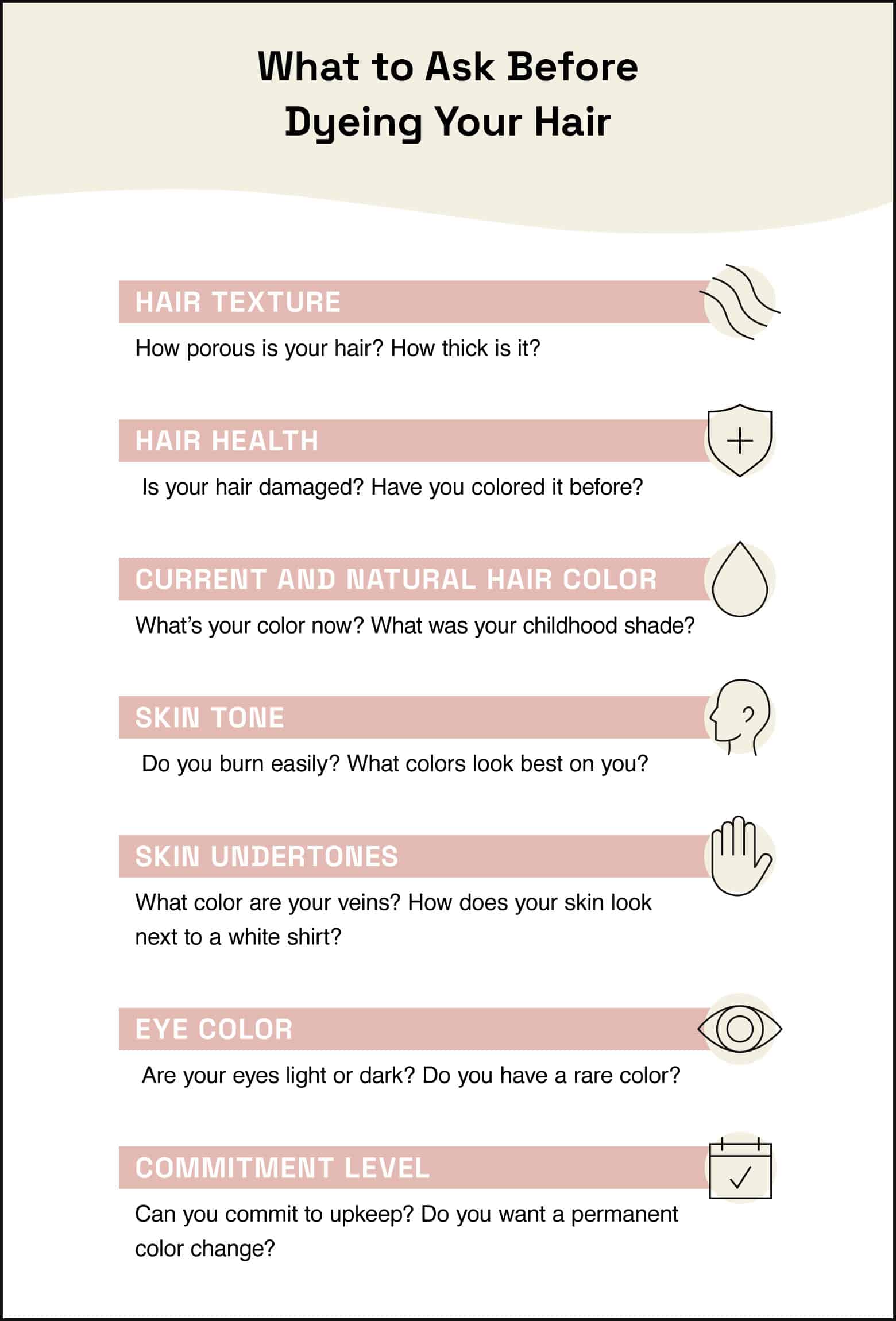
What should I use if I want to enhance my natural color?
You can use hair gloss or glaze to enhance your natural hair color. These are good alternatives if you’re having second thoughts about changing your color. Both of these treatments make your hair shinier and your hair color more vibrant. Here are the main differences between the two:
Hair gloss is a demi-permanent treatment normally done in salons. It can contain ammonia and uses peroxide to help penetrate your hair’s cuticle. It’s strong enough to subtly correct color, like if your color has become brassy or dull, and can cover grays.
Hair glaze is a semi-permanent treatment that doesn’t typically contain harmful chemicals. It can enhance your color and cut down on frizz.
What if I only want to cover up grays?
You can apply a root concealer or root spray if you want to cover up grays without dyeing all of your hair. You can get a product that’s permanent or washes out over time.
The best choice depends on how long you’re willing to commit and how much time you have on hand. For example, powders are great if you want a quick fix and don’t have the time to sit and color your hair.
You can also look into gray blending, balayage, and other types of highlights if you’re open to coloring some parts of your hair. These methods can hide your grays while also enhancing your current color.
Hair color inspiration
It’s time to take all of the information you’ve learned and see some examples of hair colors. Check out these boards for inspiration. We rounded up some examples to compare and contrast the differences between the hair colors that best fit each undertone.
Warm undertones
If you have warm undertones, then you should focus on rich colors that bring out the warmth in your skin. For example, aim for a golden or honey shade if you want a blonde hair color.
Caramel and mahogany work well as brunette shades. If your heart is set on going red, lean toward colors with red tones like scarlet and russet. Icy and cooler colors can clash with warm undertones. These shades can wash you out and make your skin appear dull or pale.
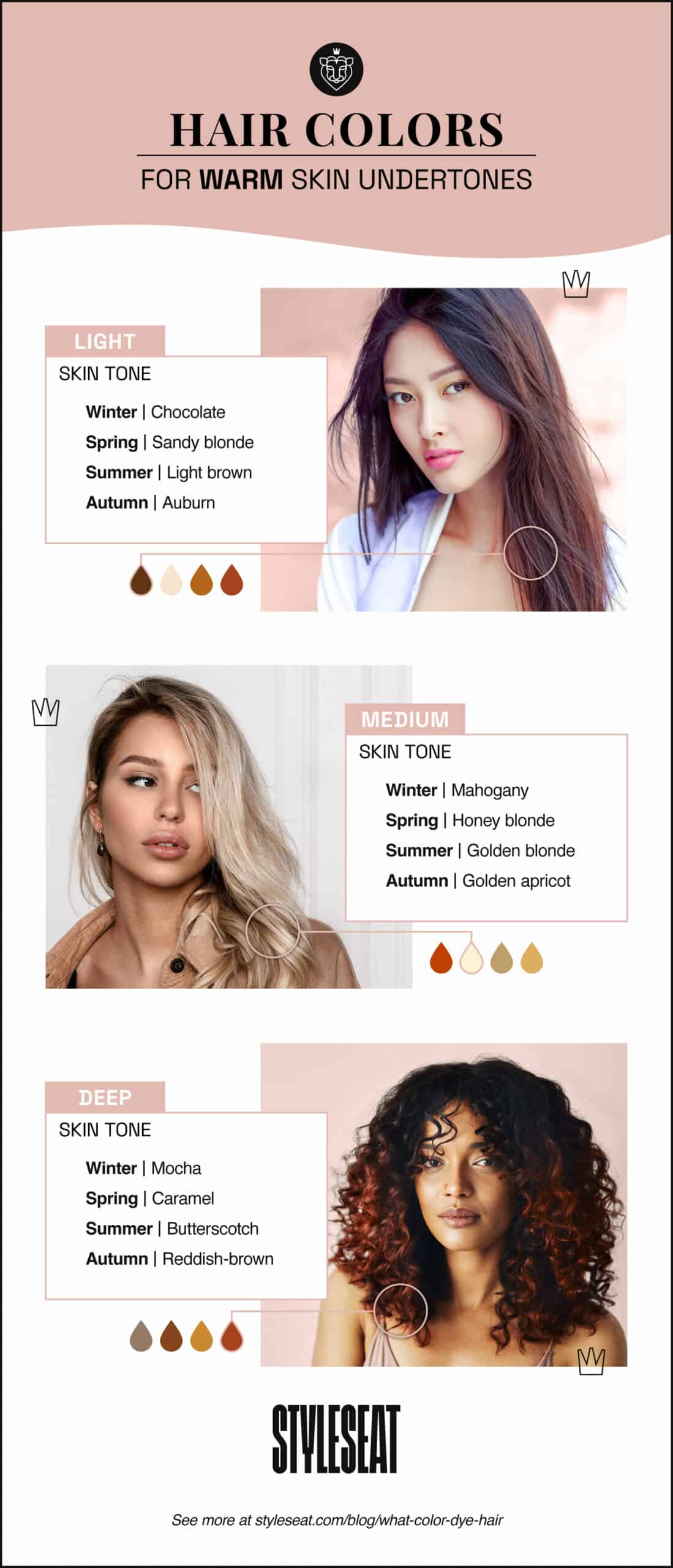
Neutral undertones
Do you have neutral undertones? You’re in luck! You can rock most warm and cool undertones. Use other factors like your eye color, skin tone, and commitment level to help narrow down your hair color choices.
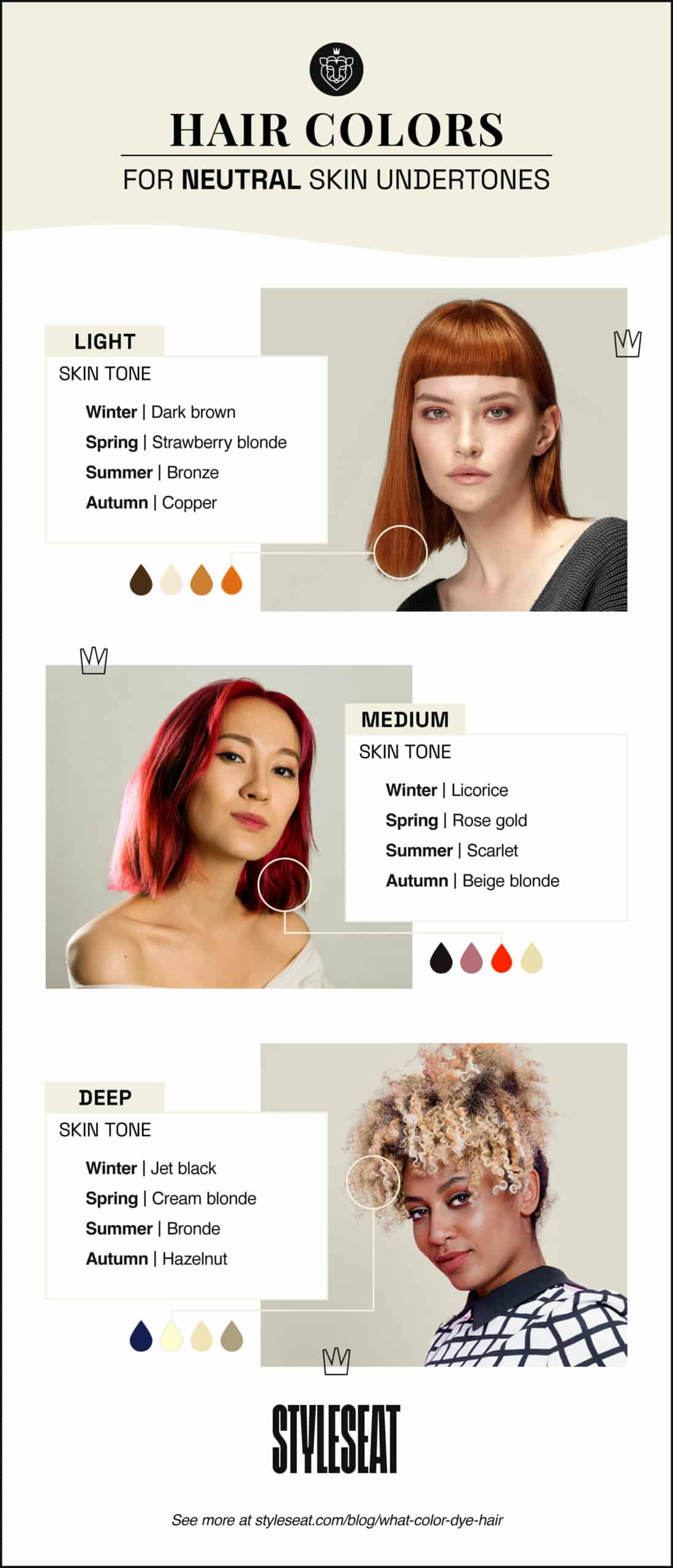
Cool undertones
Your goal with cooler undertones is to complement the blue and pink tones in your skin. For example, ash or baby blonde looks great against cool undertones.
When going with brunette shades, dark and deep colors look best. Reds that lean more violet or pink than red are also your best bet. Warm shades on cool undertones can make you look washed out or dull.
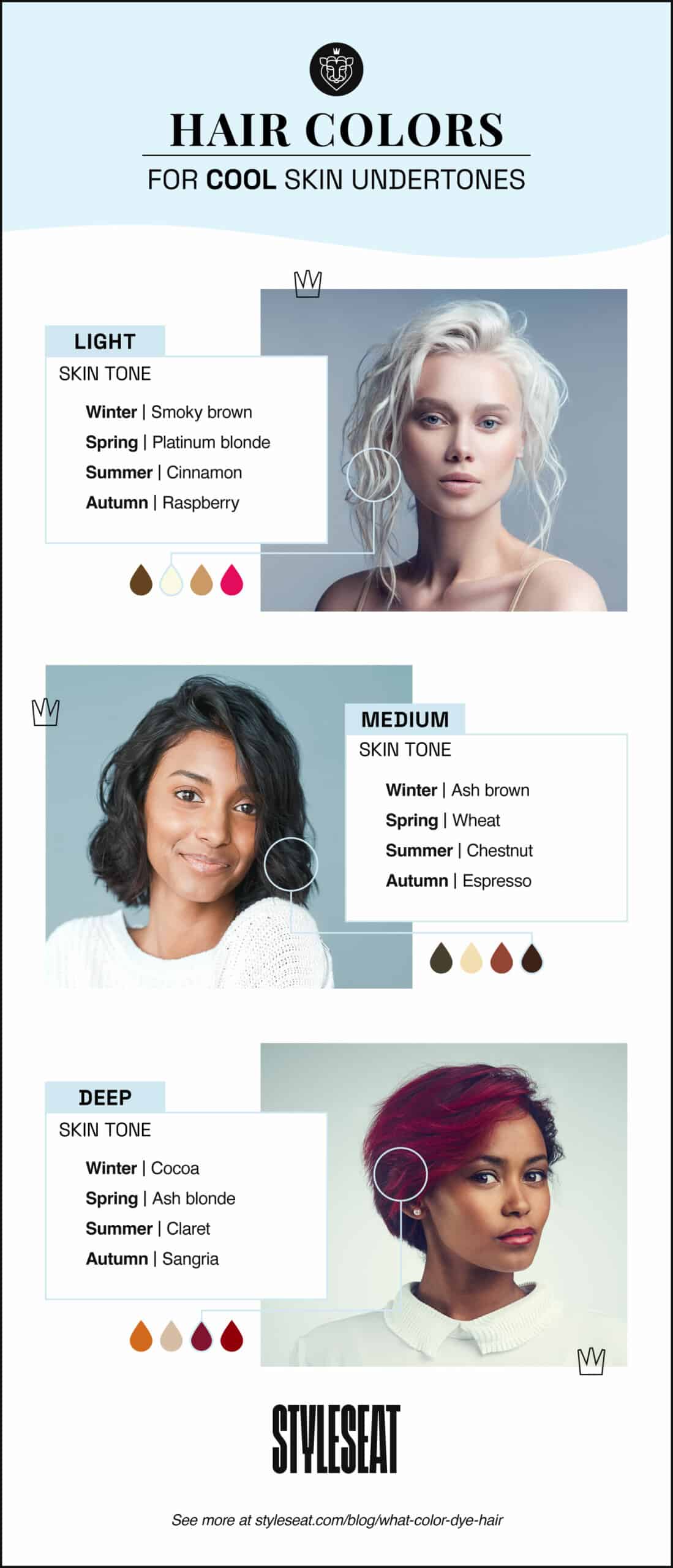
Hopefully, you’re now a lot closer to figuring out what color you should dye your hair. We know that that still leaves lots of options if your heart isn’t already set on a color. When in doubt, look for a hair colorist near you to get advice tailored to your goals and your hair.
